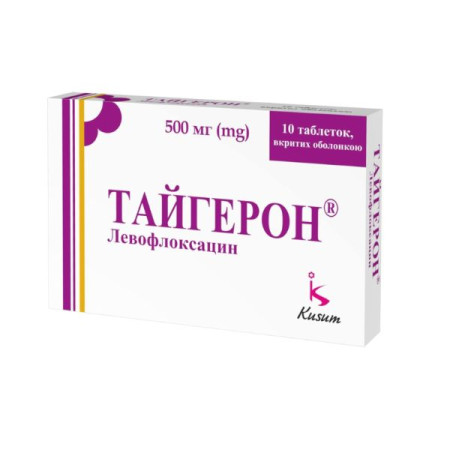Volvit film-coated tablets 5 mg No. 30

Instructions for Volvit film-coated tablets 5 mg No. 30
Composition
active ingredient: biotin;
1 tablet contains 5 mg of biotin;
excipients: celactose 80, sodium lauryl sulfate, croscarmellose sodium, colloidal anhydrous silicon dioxide, magnesium stearate, Opadry II 85G54348 pink coating*.
* – Opadry II 85G54348 pink coating: polyvinyl alcohol, talc, titanium dioxide (E 171), polyethylene glycol, lecithin, Ponceau 4R (E 124), quinoline yellow (E 104).
Dosage form
Film-coated tablets.
Main physicochemical properties: round biconvex tablets, coated with a pink coating.
Pharmacotherapeutic group
Simple vitamin preparations. Biotin.
ATX code A11H A05.
Pharmacological properties
Pharmacodynamics
Biotin (vitamin H, vitamin B7) is a water-soluble vitamin of group B. In the body, biotin plays an important role in the metabolism of carbohydrates, fats and proteins, and is vital for normal cell growth and development. When ingested, biotin serves as a coenzyme of carboxylases, has an insulin-like effect and participates in the process of gluconeogenesis (due to participation in the synthesis of glucokinase), as a result of which it helps stabilize blood sugar levels and improves the function of the nervous system. Biotin is a synergist of other B vitamins, folic acid, pantothenic acid, cyanocobalamin. There is evidence of biotin's participation in the synthesis of purine nucleotides. Biotin is also a source of sulfur, which participates in the synthesis of protein - collagen and thus has a positive effect on the structure of the skin and its appendages (hair, nails).
Biotin deficiency can occur with an unbalanced diet, long-term diets and the use of raw egg white; with parenteral nutrition; with malabsorption syndrome, after resection of the small intestine; with biotin-associated multiple carboxylase deficiency; in patients on hemodialysis.
Pharmacokinetics
In the body, biotin is rapidly absorbed in the small intestine by passive diffusion, after which it enters the liver through the portal system and then into the systemic bloodstream. The degree of binding of biotin to plasma proteins is 80%. The concentration of free or weakly bound biotin in the blood is usually from 200 to 1200 μg/l. Biotin passes through the blood-brain and placental barriers. It is metabolized in the body with the formation of various metabolites. Biotin is excreted in the urine (from 6 to 50 μg per day) and feces in an unchanged form (about 50%), as well as in the form of biologically inert metabolic products. The half-life depends on the volume of the administered dose and is about 26 hours after the oral administration of a dose of 100 μg per kg of body weight. In patients with biotinidase deficiency, the half-life after administration of the same dose is reduced to 10-14 hours.
Indication
Treatment of diseases caused by biotin deficiency: skin, nail, and hair diseases.
Treatment of genetically determined biotin-associated enzymopathies (multiple carboxylase deficiencies).
Contraindication
Known hypersensitivity to biotin or to other components of the drug.
Interaction with other medicinal products and other types of interactions
When using biotin with anticonvulsants, a decrease in the concentration of biotin in the blood plasma is possible due to increased urinary excretion. Valproic acid reduces the activity of biotinidase, reducing the function of mitochondria in the liver.
Raw egg whites contain the protein avidin, which interacts with biotin, so you should avoid consuming them together. Consuming large amounts of raw eggs for 2-3 weeks can cause biotin deficiency.
Pantothenic acid in large doses competes with biotin, so their simultaneous use should be avoided.
Application features
The duration of the treatment course prescribed by the doctor should not be exceeded. In case of intermittent or premature discontinuation of treatment, the effect of the drug may decrease. Due to the good tolerability of biotin, treatment can be continued for a long time.
Excipients.
The drug contains Ponceau 4R (E 124), therefore it may cause allergic reactions.
Use during pregnancy or breastfeeding
There are no data on the use of the drug during pregnancy or breastfeeding.
The ability to influence the speed of reactions when driving vehicles or other mechanisms
There is no data on the negative effect of the drug on the speed of psychomotor reactions.
Method of administration and doses
Volvit® is for oral use by adults. Take with meals, with a small amount of water.
Diseases of nails, hair, skin: the recommended dose is 5 mg (1 tablet) per day.
Genetically determined enzymopathies associated with biotin (multiple carboxylase deficiency): prescribe 2-4 tablets (daily dose - up to 20 mg of biotin) in 1-2 doses per day.
The duration of the treatment course depends on the nature and course of the disease and is usually 1 month.
Children
The drug is not intended for use in children.
Overdose
There are currently no reports of biotin overdose.
Adverse reactions
On the part of the immune system: allergic reactions are possible, including chest pain, shortness of breath, urticaria, skin rashes.
Expiration date
2 years.
Storage conditions
Store at a temperature not exceeding 25 ºС.
Keep out of reach of children.
Packaging
10 tablets in a blister, 3 blisters in a cardboard box.
Release category: Over-the-counter.
Producer
KUSUM HEALTHCARE PVT LTD/KUSUM HEALTHCARE PVT LTD.
Location of the manufacturer and its business address.
SP-289 (A), RIICO Industrial area, Chopanki, Bhiwadi, Dist. Alwar (Rajasthan), India/SP-289 (A), RIICO Industrial area, Chopanki, Bhiwadi, Dist. Alwar (Rajasthan), India.
There are no reviews for this product.
There are no reviews for this product, be the first to leave your review.
No questions about this product, be the first and ask your question.








